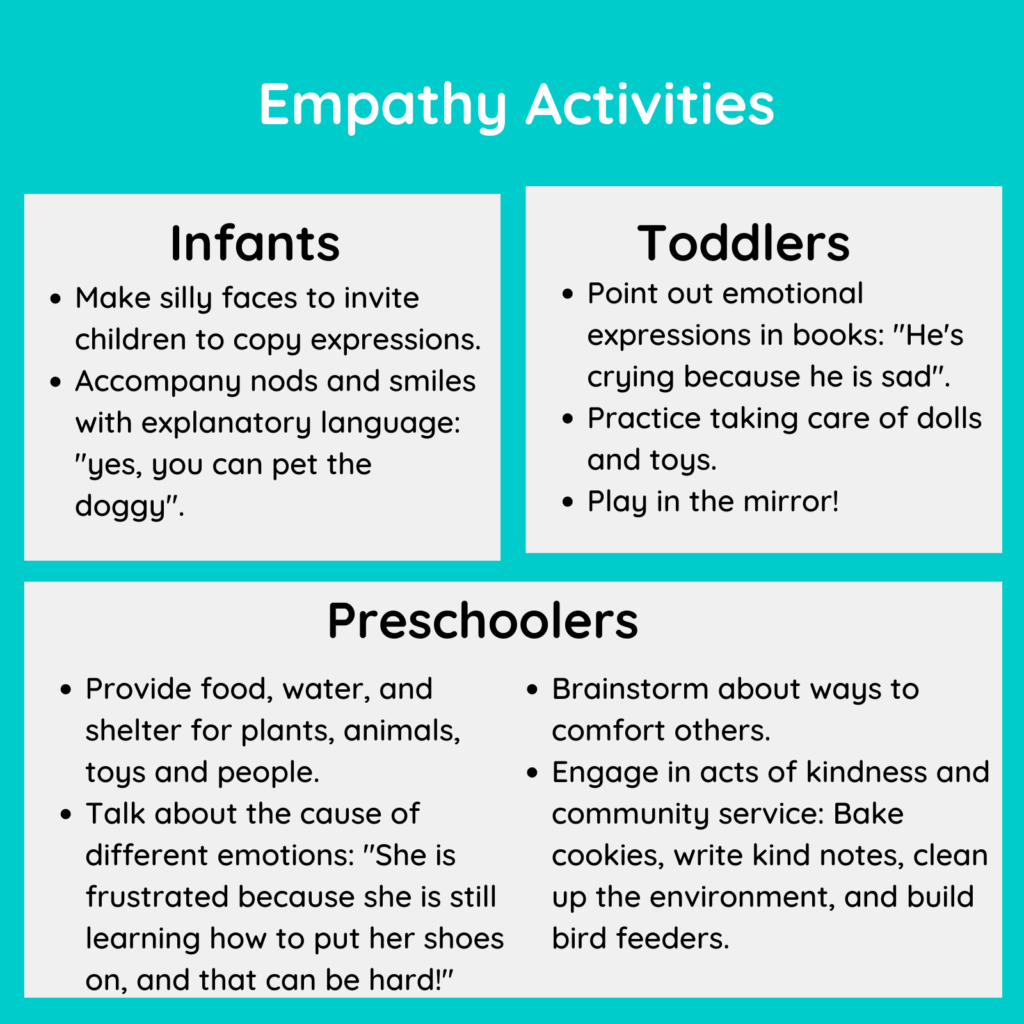
Emotions are an important part of the human experience. Emotions are both mental and physical, as we experience the internal flutter of butterflies in our stomach, or feel our cheeks externally flush with embarrassment, or see our sibling’s eyebrows furrow with consternation. Empathy is the ability to understand and respond to the feelings of others– while it might take a lifetime to understand our own emotions and those of others, empathy is a skill that we can help young children to develop from an early age.
Indeed, emotional connection is the priority for young infants, as they seek to read and understand the emotions of their caregivers. For example, infants observe the face of their caregiver—if they see a smiling face, they might smile in return, or coo and babble joyfully to join in the same mood of their caregiver or elicit even more smiles. Or, if an infant hears other infants crying, they too may start crying. As young as six months of age, infants may use social referencing, which is when they look to their caregiver to determine what the appropriate response would be for a situation—for example, they might look to their caregiver for an approving glance before picking up a new toy, or before reaching towards a family pet. This navigation of emotions is a precursor to empathy, because the child is demonstrating that they understand the physical, verbal, or facial cues that are the ways that humans express emotion.
When children are around two years of age, they start to understand their own emotions, needs, and those of others, though they might not be able to name the specific emotion. For example, they might hug a crying sibling, or act scared when they see a character hiding under a bed in a book. Little by little, children start to develop the interconnected skills that allow them to make sense of these emotions, comfort the person feeling them, and come to their own conclusions about the world. For example, while a toddler might simply bring a doll to a peer that is crying for their parent, a preschool aged child might go further to explain “She’s sad because her mommy isn’t here, but I can share my doll with her and that will make her feel less lonely”. This complex analysis of emotions requires advanced language, the cognitive ability to understand cause and effect, and social-emotional capacity to know what this child’s specific needs and preferences are. In the Rayz Kidz app, we believe that the best way for children to develop these interconnected skills related to empathy is through play. For example, when we build a house for insects using collected natural materials, we can use this as an opportunity to talk about what it means to feel safe and protected from weather, and connect to ways we can take care of local animals. When we have a Goldilocks and the Three Bears porridge taste test, we can talk about how the bears might feel after witnessing Goldilocks’ behavior as she makes her way through their home, uninvited. There is no need to expect children to behave or react perfectly in response to the emotions of others, but we can slowly work with children to acknowledge and respond to their own colorful emotions and those of others. Through play we can help to encourage children’s natural ability to be kind, understanding and empathetic humans.

For more activities that help build empathy, visit rayzkidz.com/category/activities